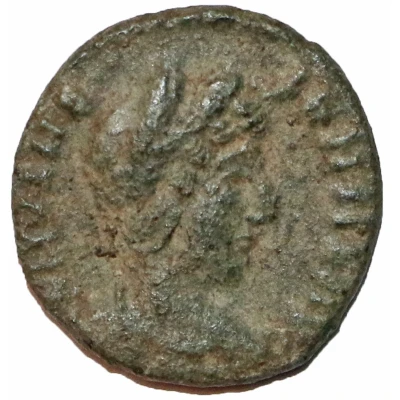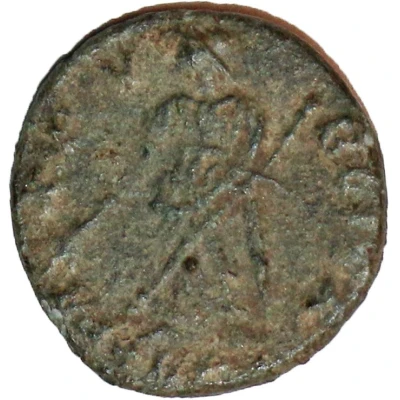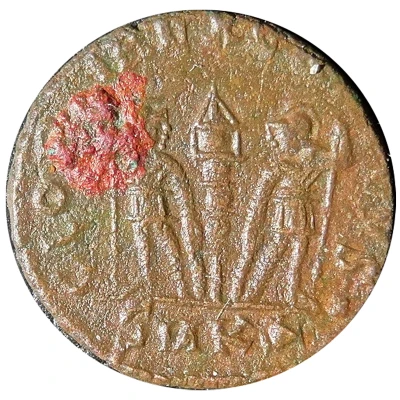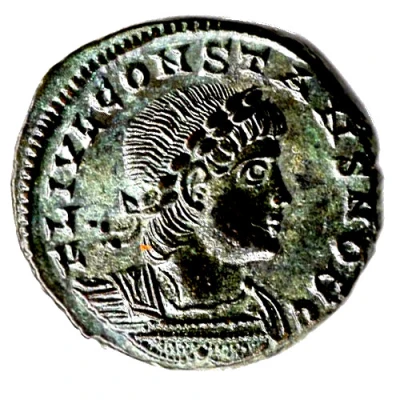
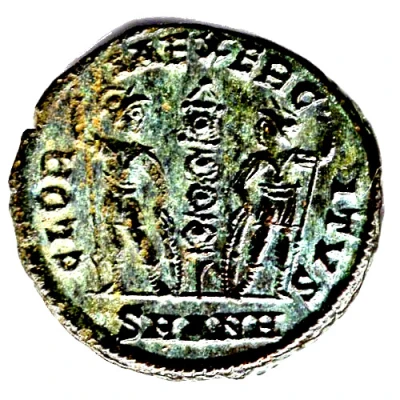

© escoins (CC BY-NC-SA)
Follis - Constans I GLORIA EXERCITVS; Antioch
| Bronze | 2.17 g | 17 mm |
| Issuer | Rome › Roman Empire (27 BC - 395 AD) |
|---|---|
| Emperor | Constans I (337-350) |
| Type | Standard circulation coin |
| Years | 337-340 |
| Value | Follis (1⁄180) |
| Currency | Solidus, Reform of Constantine (AD 310/324 – 395) |
| Composition | Bronze |
| Weight | 2.17 g |
| Diameter | 17 mm |
| Thickness | 1.5 mm |
| Shape | Round (irregular) |
| Technique | Hammered |
| Orientation | Medal alignment ↑↑ |
| Demonetized | Yes |
| Updated | 2024-10-04 |
| Numista | N#153919 |
|---|---|
| Rarity index | 83% |
Reverse
Two helmeted soldiers standing, facing each other, each holding inverted spear with outer hand and leaning on shield with inner hand; between them, one standard topped by the Chi-Rho.
Script: Latin
Lettering:
GLORIA EXERCITVS
SMANH
Interesting fact
One interesting fact about the Follis - Constans I coin is that it features the first Christian symbolism on a Roman imperial coin. The reverse side of the coin depicts a chi-rho monogram, which represents the first two letters of the Greek word for Christ, Χριστός (Christos). This symbol was adopted by Emperor Constantine the Great after his conversion to Christianity and became a common motif in Christian art and architecture. The inclusion of this symbol on the coin reflects the significant religious and cultural changes that were taking place in the Roman Empire during the 4th century.
